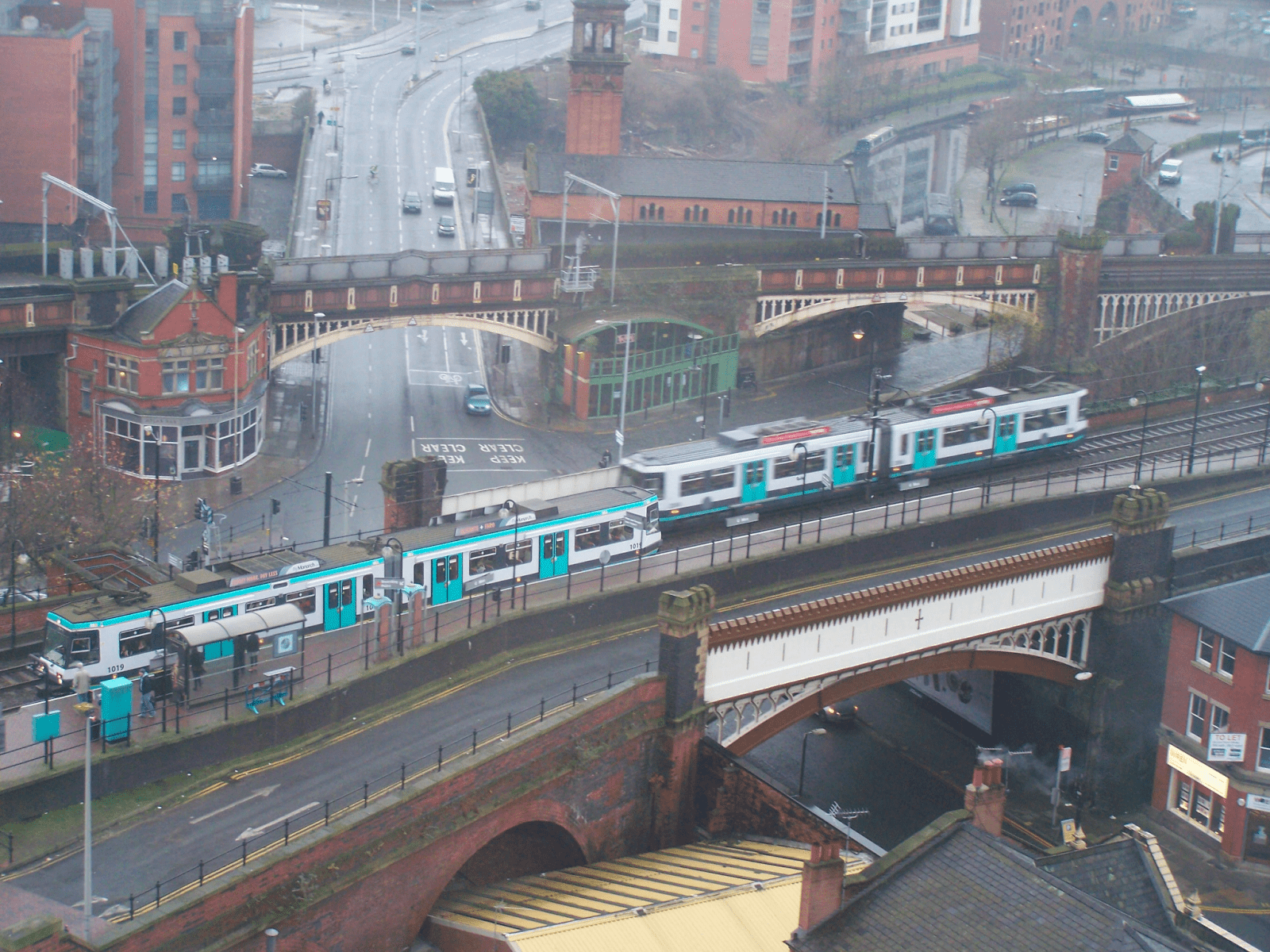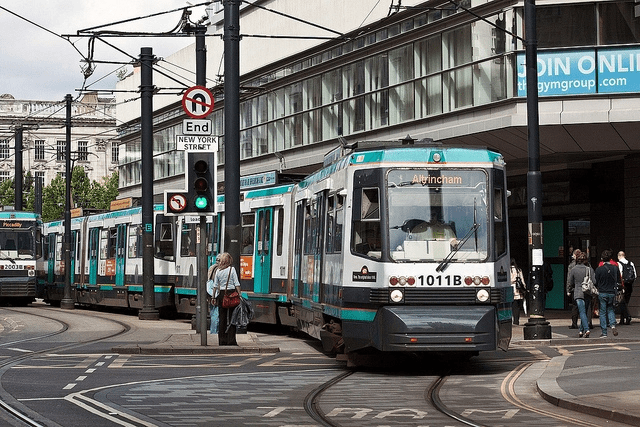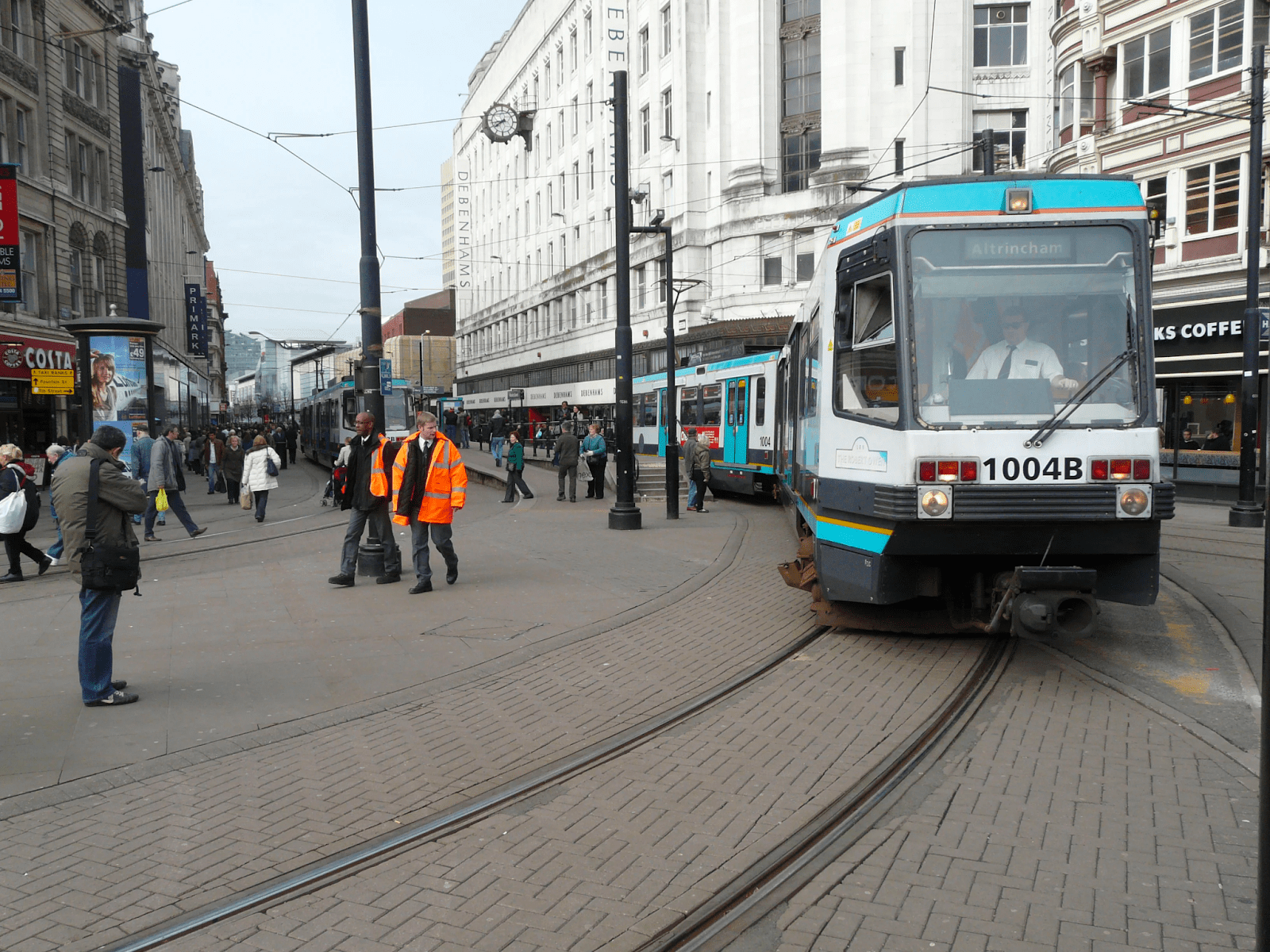Railway transport was an important component of developing cities. Omnibuses, trams and undergrounds played an important role in the functioning of many cities around the world in the 19th and 20th centuries. One of these types of transport, the Metrolink, appeared in the English city of Manchester and marked an era of innovation, development and true evolution of the city’s transport infrastructure. Learn more at manchester-future.
In the 21st century, Manchester Metrolink is an integral part of city life. More than 36 million people used the light rail transport system during 2022-2023. Do Manchester residents know the history of one of the most popular forms of public transport in the city?
What is Metrolink?

Many visitors to Manchester don’t know what the Metrolink is. In simple words, the Metrolink is an ordinary tram. Manchester Metrolink is a huge tram system that was first launched in 1992.
This tram system was the first in the whole of Great Britain and one of the first modern and innovative tram and light rail systems in Europe.
The emergence and development of tram transport in Manchester

Of course, trams existed in Manchester even before the appearance of the Metrolink in 1992. In particular, one of the first trams to run in Manchester was omnibus, better known as a horse-drawn tram. They operated on the territory of the city in the period from the middle of the 19th century to the beginning of the 20th century. Omnibuses were replaced by an electric tram at the end of the first half of the 20th century.
The 20th century was characterised by the rapid development of the tram system in Manchester. Municipal tramways such as Bury Corporation Tramways, Rochdale Corporation Tramways and Manchester Corporation Tramways were constantly expanding. Their tram lines ran all over the city.
By 1930, Manchester’s tram network had grown to 163 miles (262 km). At that time, it was so huge that it became the third largest in the UK.
With the appearance of a new type of transport in Manchester, namely trolleybuses, the city’s tram system began to gradually decline. Thus, Manchester’s last tram line was closed in 1949.
The growth of urban traffic jams and the appearance of the Metrolink

During industrialisation and urbanisation processes in the 20th century, large cities such as Manchester began to experience drastic population growth. The huge influx of people caused the overloaded traffic on the city’s roads. Therefore, residents started to search for the most effective solution to the public transport issue.
The construction of the Metrolink system was the best alternative in that situation. The Greater Manchester County Council was the first to put that idea forward in the middle of the 20th century. Back then, Manchester faced colossal traffic jams and a lack of railway connections in the very centre of the city. At that time, the Metrolink was considered an affordable and efficient urban light rail transport. However, in fact, nobody undertook any steps on that issue in the 1980s. Later, repeated proposals for the construction of the Metrolink were put forward in 1984 and 1987. In 1988, the project of the Metrolink system in Manchester was approved after careful research of similar tram systems around the world.
Stages of the construction

The construction of the Metrolink was carried out in several stages:
- the 1990s – the Bury and Altrincham lines
- the 1990s – the Salford Quays line
- the 2000s – the Oldham, Rochdale and South Manchester lines
- the 2000s – Ashton-under-Lyne and East Didsbury lines
- 2017 – 2CC (the Second City Crossing).
Since the opening of the Metrolink in 1992, the tram system has undergone many changes. In particular, over the past years, additional stations were opened, railways were modernised, new carriages were put into operation and much more.
The appearance of the Metrolink and its modernisation had a profound effect on urban development in general. The new public transport network allowed Manchester to gradually expand and develop its infrastructure. The appearance of the Metrolink also allowed people to settle far from the central streets of the city, avoiding the overpopulation of the city centre and traffic jams.
The Metrolink tram system, which was founded in Manchester in the 1990s, has gone through a long way of development and formation. In the 21st century, it is an integral part of city life. Thanks to the Metrolink, millions of city residents get to work and home timely, comfortably and without traffic jams.
In the 21st century, this system is capable of meeting the needs of Manchester’s ever-growing population. Since 1992, more than 20 light rail tram lines have appeared in Manchester. All this testifies to the incredible popularity, comfort and efficiency of such passenger transportation. In addition, one of the last Metrolink stations in Manchester was opened in 2020.
The Metrolink appeared much later in Manchester than in other cities of the world, but it reached the peak of development and innovation in the 21st century. During 2022-2023, more than 36 million passengers used the Manchester Metrolink system.